|
| Tu |
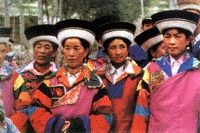 |
Population
Location
Major languages
|
192,000
Qinghai
Tu language
|
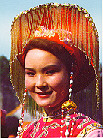 |
Tu settles in the Qing Hai. They lived on animal husbandry and now mainly on farming. They have a few dialects and use Han Chines or Tibetan language. They believe in Lama. They have the longest festival season and like dancing and music.
|
|
 |
| Daur |
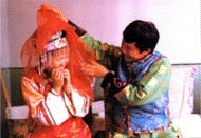 |
Population
Location
Major languages
|
121,357
Inner Mongolia
Daur language
|
 |
| |
|
The Daur people are thought to be descendants of the Khitan, an ancient nomad tribe who lived in the lower reaches of the Heilong River and founded the Liao Dynasty (916-1125). In the early Qing Dynasty, groups of Khitans migrated into China 's western region and formed a new ethnic group, the Daur people.
The Daur language consists of three dialects - Buteha, Qiqihar and Xinjiang, and belongs to the Mongolian Austronesian of Altai Phylum. They have no written language of their own. During the Qing Dynasty, they used Manchu as their written language. The Daur people communicate with each other, and with the other local ethnic groups, in Chinese, Mongolian, Uigur, Kazak, and Ewenki.
|
 |
| Mulao |
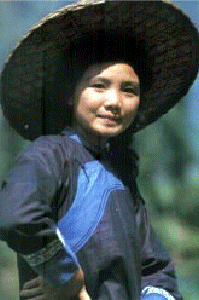 |
Population
Location
Major languages
|
159,000
Guangxi
Mulao language
|
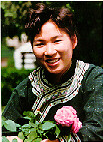 |
| |
|
Mulao settles in the mountain area. They live on farming and mining. In their area, there are rich minerals and coal mining is one of the major industries. They have own language but most of them know Han Chinese very well. They believe in Taoism and Buddhism.
|
| Qiang |
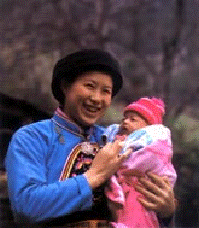 |
Population
Location
Major languages
|
198,000
Sichuan
Qiang language
|
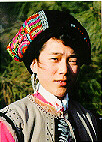 |
Qiang has settle in the Qinhai and Tibet for more than 3,000 years. They live on farming and hunting. They have very old written language but lost. They are many remains that show the superior structure of the building constructed by Qiang.
|
| Bulang |
 |
Population
Location
Major languages
|
82,000
Yunnan
Bulang Language
|
 |
Bulang settles in the high mountain area. They live on farming and tea is one of the major products for them. There are many other tropical products also. They have own language and some of them also use Han Chinese, Dai and Wat languages.
|
| Sala |
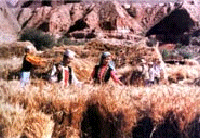 |
Population
Location
Major languages
|
88,000
Qinghai, Gansu and Xianjian
Sala language
|
 |
Sala migrated to this area from Middle Asian countries. They settle along the Yellow River and live on farming. They have own language and no written language. They believe in Islam and maintain Islam's tradition.
|
|
| Maonan |
 |
Population
Location
Major languages
|
72,000
Guangxi
Maonan language
|
 |
Maonan is the native in Guangxi. They live on farming and animal husbandry. Cattle farming are a big industry for them. They have own language and no written language. Most of them know Zhang and Han Chinese.
|
| Gelao |
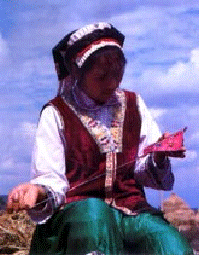 |
Population
Location
Major languages
|
438,000
Guizhou, Guangxi and Yunnan
i
Gelao language
|
 |
Gelao is an very old nation in Guizhou. They live on farming and have own language. Most of Gelao now use Han Chinese. They worship old tree and have very unique "tree culture"
|

| Xibo |
 |
Population
Location
Major languages
|
172,847
Xinjiang, Liaoning and Jilin
Xibo language
|
 |
Some of the Xibo moved from the Northern East to the Northern West in the early 18th Century. They were part of the Qing army to station in the West of China. They now still maintain their own written language and live on farming. Some of them believe in Lama and other religions. Xibo is always good at horse riding. The date of the migration is still a big memory day for them.
|
| Achang |
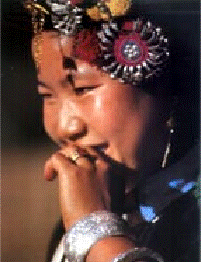 |
Population
Location
Major languages
|
28,000
Mostly in Yunnan
Achang language
|
 |
Achan is the earliest native in Yunnan. They settle in the valley and live on farming. They have own language but most of them can speak Han Chinese, Dai and other languages. They have very unique native dress and the girls wear beautiful silver necklace and rings.
|
| Pumi |
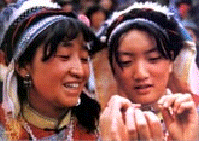 |
Population
Location
Major languages
|
30,000
Yunnan
Pumi language
|
 |
Pumi moved to Yunan from the north in 13th Century. They live on farming. Their culture is influenced by many others such as Tibet, Burma, Bai and Han Chinese. Most of them use Han Chinese. They have own religion but some of them believe in Lama or Taoism.
|
|
| Tajige (Tajik) |
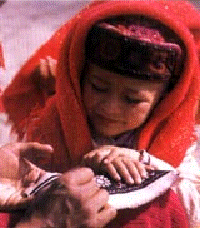 |
Population
Location
Major languages
|
33,500
Xinjiang
Tajike language,Uighur
|
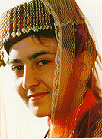 |
Tajik is one of the oldest minority groups in China. They settle on the main route of "Silk Road" and benefit from the culture exchanges to the West since the early day. They have own language and believe in Islam. They live on farming, animal husbandry and hunting. They are good at horse riding. Eagle is their hero symbol.
|
| Nu |
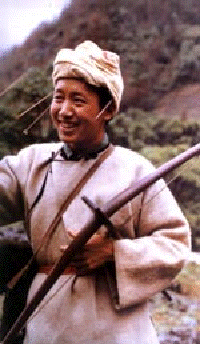 |
Population
Location
Major languages
|
27,000
Yunnan and Tibet
Nu language
|
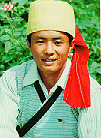 |
Nu settles in very remote area and lived in very poor conditions. They have own language but use Lisu and Han Chinese also. Only in the last 50 years, they have catch up with other minority groups.
|
| Wuzibieke (Uzbek) |
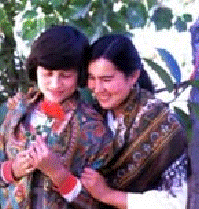 |
Population
Location
Major languages
|
12,000
Xinjiang
Wuzibieke language
|
 |
Uzbek migrated from Mongol. They mixed with Uighur and Kazakh. They have own language but also know Uighur , Kazakh and Han Chinese. They are Islam and live on farming, trading and education
|
| Russian |
 |
Population
Location
Major languages
|
13,500
Xinjiang
Russian,Chinese,Uighur, Hasake language
|
 |
Russian moved into China in 18th and 19th Century. They maintain their own language, religion and tradition. They have better than average education and live on farming, gardening, fishery, art and education. Most of them use Hen Chinese for communication.
|
| Owenke (Ewenki) |
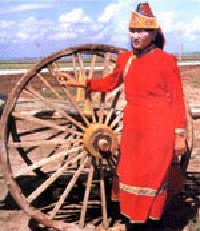 |
Population
Location
Major languages
|
12,297
Inner Mongolia,
Heilongjiang
Ewenke language, Mongolian, Chinese
|
 |
Ewenki settles in Inner Mongolia and along the Heilongjiang. They mixed with Mongolian, Hen Chinese and Olunchun. They use Mongolian or Hen Chinese language and believe in Tibetan Buddhism. They live on farming and hunting. Their tradition is closed to Mongolian.
|
| De'ang |
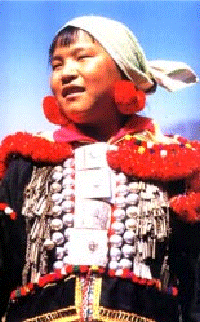 |
Population
Location
Major languages
|
15,400
Yunnan
Deang language
|
 |
De'ang is the oldest native in Yunnan. They are very close to Dai. They have own language and use Dai, Jingpo and Han Chinese. Tea is their main product. They are very good in silversmith.
|
| Baoan |
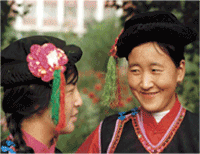 |
Population
Location
Major languages
|
12,000
Mostly in Gansu
Baoan language,Chinese
|
 |
Baoan settles in the border area of Gansu and Qinhai. They live on farming. They are very good in making sharp knife even since the early day. They believe in Islam and have the same tradition as other Islam people. They have no written language and use Han Chinese mainly.
|
| Yugu |
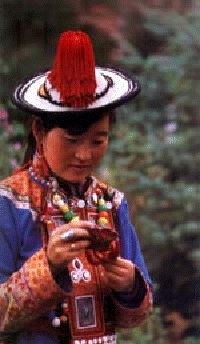 |
Population
Location
Major languages |
10,500
Gansu
Yugu language,Chinese
|
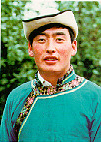 |
Yugu has an old history traced back to the 9th Century. They live on animal husbandry and farming. There is very rich reserve of precious stones in the area and their jade is very famous. Their language and tradition is closed to Tibetan. Their religion is Lama.
|
| Jing (Vietnamese) |
 |
Population
Location
Major languages
|
18,900
Guangxi
Jing language,Chinese
|
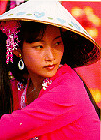 |
Vietnamese immigrated into China 400 years ago and settles down in this area. They live on fishing along the seaside and fishery is the main industry for them. They have own language but know Han Chinese well. Catholic or Tao are the main religions in Vietnamese.
|
| Tataer (Tatar) |
 |
Population
Location
Major languages
|
4,000
Xinjiang
Tataer language
|
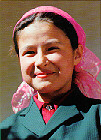 |
Tatar migrated to China in the early 19th Century from Europe and Russia. They mixed with Uighur and Kazakh. They maintain their own language, tradition and Islam religion. Their house presents in European style, quite different from Uighur and Kazakh. Their living standard is higher at average since they are good at business and education.
|
| Dulong |
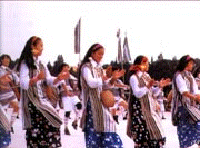 |
Population
Location
Major languages
|
5,800
Yunnan
Dulong language
|
 |
Dulong settles in the high mountain area by the border of Tibet and Burma. They still live in very primitive form. They have no written language and use either Tibetan or Hen Chinese language. They farm, hunt and maintain a very simple society with social order and discipline. They are well known as a nation with good credibility and morality.vv
|
| Olunchun |
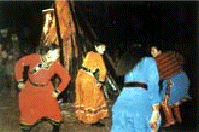 |
Population
Location
Major languages
|
6,900
Inner Mongolia
Elunchun language
|
 |
Olunchun settles in Inner Mongolia and along the Heilongjiang. They mixed with Mongolian and Hen Chinese. They use Mongolian or Hen Chinese language and believe in religion. They live on farming and hunting.
Olunchun settles in Inner Mongolia and along the Heilongjiang. They mixed with Mongolian and Hen Chinese. They use Mongolian or Hen Chinese language and believe in religion. They live on farming and hunting.
|
|
| Hezhe |
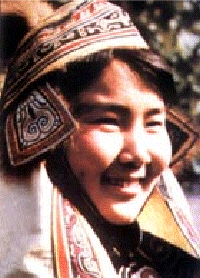 |
Population
Location
Major languages
|
4,245
Heilongjiang
Haozhe language,Chinese
|
 |
Hezhe settles along Heilongjiang River and lives on fishing and hunting. They have own language but most of the young generation now use Han Chinese as the common language. They create many innovative fishing tools and accumulate very rich experience in fishery industry.
|
| Menba |
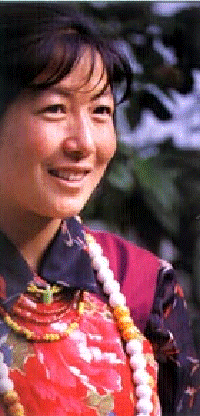 |
Population
Location
Major languages
|
7,475
Tibet
Menba language,Chinese
|
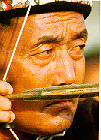 |
Menba settles in the high Mountain and seldom contacts with outside world. They are closely related to Tibetan. The sixth Dala Lama of Tibet was a Menba. They do no have own language but use Tibetan's language. They became part of China since 13th Century.
|
| Luboa |
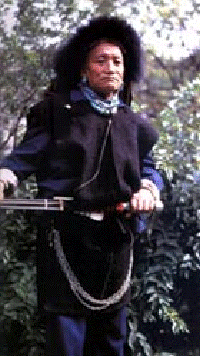 |
Population
Location
Major languages
|
2,300
Tibet
Luoba language
|
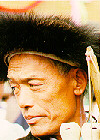 |
Luboa is one of the smallest ethnic minority groups in China. They live in high mountain area and seldom contact with outside world. They still stay in very primitive society event today. They live on hunting and farming. They have no written language and only few of them know Tibetan or Chinese language.
|
| Jinuo |
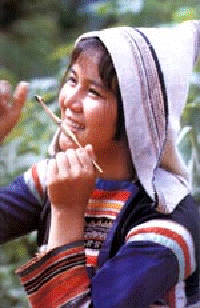 |
Population
Location
Major languages
|
18,000
Yunnan
Jinuo language
|
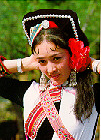 |
Jinuo settles in Jinuo Mountain and lives on farming. Their tea is very famous. Their society was very backward and still stayed at very primitive stage until the 16th Century. They have own religions and own language but no written language. All Jinuo's women are good at weaving and making cloths.
|
|